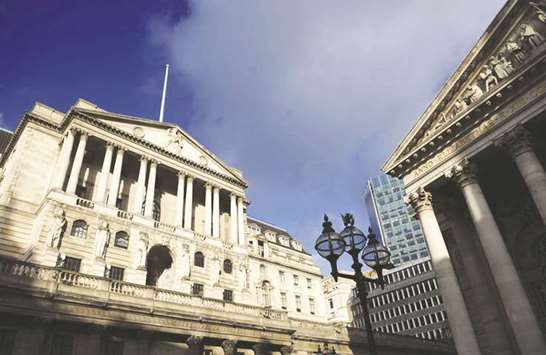Bank of England officials said they see no need to change how they communicate the outlook for interest rates after the central bank started tightening policy this month.
Michael Saunders, Jon Cunliffe, Ian McCafferty and Gertjan Vlieghe backed the strategy of forward guidance on the likely direction and speed of monetary policy changes, dependent on the economy evolving as the BoE expects. The four men, part of the nine-member Monetary Policy Committee, told Parliament yesterday that it would be unwise to be too definite on borrowing costs.
“It’s tempting to think the bank could promise where rates will be in future, but this would create more uncertainty,” Saunders told lawmakers in London. “Monetary policy responds to what the economy does. It’s not possible to forecast the economy with perfect certainty.”
The BoE lifted its benchmark rate for the first time in a decade this month, bringing it up a quarter-point to 0.5%. Cunliffe was one of two policy makers dissenting in the vote, while McCafferty and Saunders had already been pushing for an increase for several months. Markets are pricing in about one quarter-point increase a year for the next two years.
Central bankers worldwide are reconsidering how best to guide market expectations as rates start to rise from ultra-low levels.
The BoE has been frequently criticised in recent years for hinting at rate hikes, and then failing to deliver.
The officials contrasted their strategy favourably against alternatives at peers such as the Federal Reserve and Sweden’s Riksbank.
The BoE’s forecasts for growth and inflation are based on market expectations of rates — and it sometimes remarks on whether it thinks those expectations are correct. The Riksbank makes explicit forecasts for interest rates. The US Federal Reserve gives a so-called dot plot projection which shows a range of possible outcomes from policy makers.
The European Central Bank provides guidance on the future of its bond-buying program and interest rates.
McCafferty said the Fed’s style would be an “undesirable” one for the BoE. Cunliffe said forward guidance “gets misunderstood a bit” but he still prefers the British method.
“I’m arguing against the false precision that seeks to give you a path of interest rates that you know for certainty will be followed, as I don’t think that’s possible,” Saunders said.
“It is useful for the bank to communicate widely to households and businesses a general sense that interest rates are likely to go up over the next two, three years if the economy evolves as we expect — and we can’t give you a precise path, but I think that general guidance is a very useful thing.”
The BoE raised interest rates to stem inflation, which at 3% is a full percentage point above the target. The central bank is now trying to judge to what extent tightness in the economy is countered by uncertainty over Brexit.
“We will support the economy to meet the inflation target,” said Vlieghe. “That’s all we can do.”

The Bank of England headquarters in London. Four BoE officials, part of the nine-member Monetary Policy Committee, told Parliament yesterday that it would be unwise to be too definite on borrowing costs.


